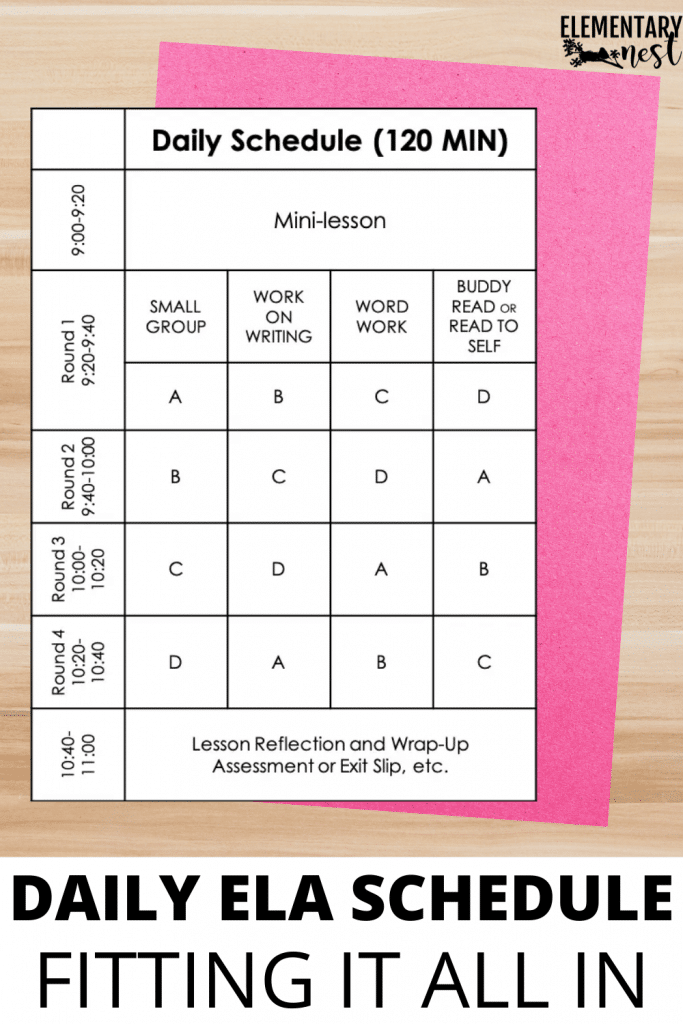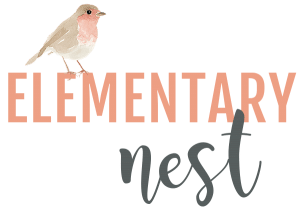
When planning for a Standards-Based Reading Block, you have a lot to consider. Firstly, you have to think about the domains. There are six ELA domains that we have to fit into our Reading Blocks. As ELA teachers, we need to be sure to include all Reading Literature, Informational, Language, Speaking and Listening, Writing, and Foundational Skill standards.
Secondly, we need to consider time. ELA Blocks can come in a variety of shapes and sizes! Some teachers have 45 minutes, some have 90. Some teachers have built-in intervention time and some do not. Writing can even be found in its own block in some schools. So, when you are trying to fit all domains into your reading block, you will need to be ready for some mock scheduling.
The summer is a great time to sit down and look at your reading block needs. Take some time to look at a curriculum map or pacing guide to get an overview of all you need to fit in. Then, grab a paper and pencil or pull up a digital sheet and start working your minutes in. There will be quite a bit of revising and editing throughout this process, but once you get it down, you will likely be set for years to come!
Need a free pacing guide? Grab your grade level pacing guide here.
- Kindergarten Pacing Guide
- 1st Grade Pacing Guide
- 2nd Grade Pacing Guide
- 3rd Grade Pacing Guide
- 4th Grade Pacing Guide
What to Fit In

What do we need to fit in? As I mentioned, there are 6 ELA Domains that we are required to cover in our ELA classrooms. Both Reading Informational and Literature are going to be large parts of your Reading Instruction. Many of your mini-lessons will be focused on these text-specific skills. Then, you have Speaking and Listening and Reading Foundational Skills that should be present across the board. These standards can be taught in a variety of ways, but should always be revisited and practiced. Lastly, you need Writing and Language. Your specific classroom schedule will have an impact on these two domains. For example, if you have a separate Writing Block, you may be teaching specific W and L skills within that time frame. However, writing and language skills will be present during your Reading Block, no matter what!
No Matter What, These are Needed Daily
When taking your time and domains into account, it is important to remember what a balanced literacy block will always have. You are always going to have a mini-lesson. This is when you will introduce a standard or skill, likely modeling the skill with a read-aloud or mentor text. Balanced Literacy blocks will have both whole and small groups to instruction. This means that you are going to be teaching to address whole class skill needs and smaller group and independent skill needs. Lastly, differentiation is going to be a large part of your planning process. Your students need daily opportunities for differentiation. These components will allow your students to work within and beyond their ability levels with the appropriate amount of guidance, building on their skill sets and experience.
Grade-Level Differences
Your grade level will also be a major player in this planning process. It is important to pace your year according to grade-specific standards and focus skills. For example, in Kindergarten and 1st grade, Reading Foundational Skills and Language standards are a heavy focus. However, in the 3rd and 4th grades, you won’t see many RF standards at all. So, when looking at your standards, consider some vertical planning, but looking a the previous and next grade level’s focuses.
Tight on Time?
Once you have figured out your focuses, consider your time frame. If you are a teacher who is tight on time, think about other snippets of time that you have throughout your day. You can add Speaking and Listening instruction to your morning meetings. You can practice Writing skills within your Science or Social Studies blocks. Get creative!
Sometimes, teachers have an opportunity to extend their ELA time with a separate Language and Writing Block! If you’re lucky enough to have this in your schedule, use all of those minutes wisely!
Common Structure Options that Work with ELA Blocks
There are a few models that we see most commonly in ELA Blocks. Reading and Writing Workshop models usually involve a mini-lesson, independent practice time, and a lesson closing or reflection. So, teachers will start by teaching a specific literacy skill, explicitly modeling how to use the skill. Then, students will practice using the skill in their reading or writing. Then, after students have had the opportunity to work with the skill (either in groups or independently), your class will come back together to reflect on the lesson and readdress the skill.
Daily 5 is a student-centered instructional approach, so, students will be choosing what they want to work on and how. Like in the workshop model, there will be a mini-lesson on a specific skill. Then, students are provided opportunities to Read to Self, Read to Someone, Listen to Reading, Work on Writing or Work on Words. When using the Daily 5 structure, the ideal scenario is for students to practice literacy in all 5 ways each day.
Similarly to the other two options, you can use centers or learning stations. You will start with a mini-lesson and move into skill-based centers or learning stations. At these centers/stations, students will need to be practicing different focus skills. Like in the other two structures, students will need to be reading, writing, and using language in some capacity.
In all of these structures, the goal is to teach a new skill, have the students practice the skill, and allow for time for more student-specific instruction and practice in the middle. And, when trying to fit all domains into your reading block, you will need to get creative with your time! So, students may be getting their RL skill instruction from the mini-lesson, Writing practice during rotations, Language and RF work during small group, and S&L when in a whole-group discussion. It will vary from class to class and likely, from unit to unit.
For a deeper dive into common structure options, click HERE to read “Five Structures for your ELA Block”.
Let’s Talk Scheduling


Depending on your class needs and the amount of time you have, you can decide how many rounds of centers, Daily 5, or workshop activities you will get to each day. Some teachers like to meet with every group every day. So, their rounds may be shorter. Some teachers like longer rounds, so they may be on an every other day rotation! The thing to remember is: it is YOUR classroom! So you can adjust any of the structure options for your ELA block to fit your needs best!

There are three sample schedules here. One has a 90-minute block, one has a 120-minute block. And one has a limited block where the teacher has had to split groups up over a two-day time frame. If you’re looking at your total time, account for a 10-20 minute mini-lesson. Then, divide the remainder of your time by the number of rounds you’d like to fit in each day. Lastly, plug in your center options and groups!
The first couple of times you try, it may not work. Just remember, to stick with it. You will find just the right fit so that you can fit all of the domains into your reading block.
Want to Learn More About Your ELA Block?
Check out the ELA webinar that I’ve converted into a YouTube video. It covers the information above and more!
You can watch above or click HERE to watch the video on YouTube.

FREE PACING GUIDE
Get this K-4 pacing guide sent directly to your inbox.


















